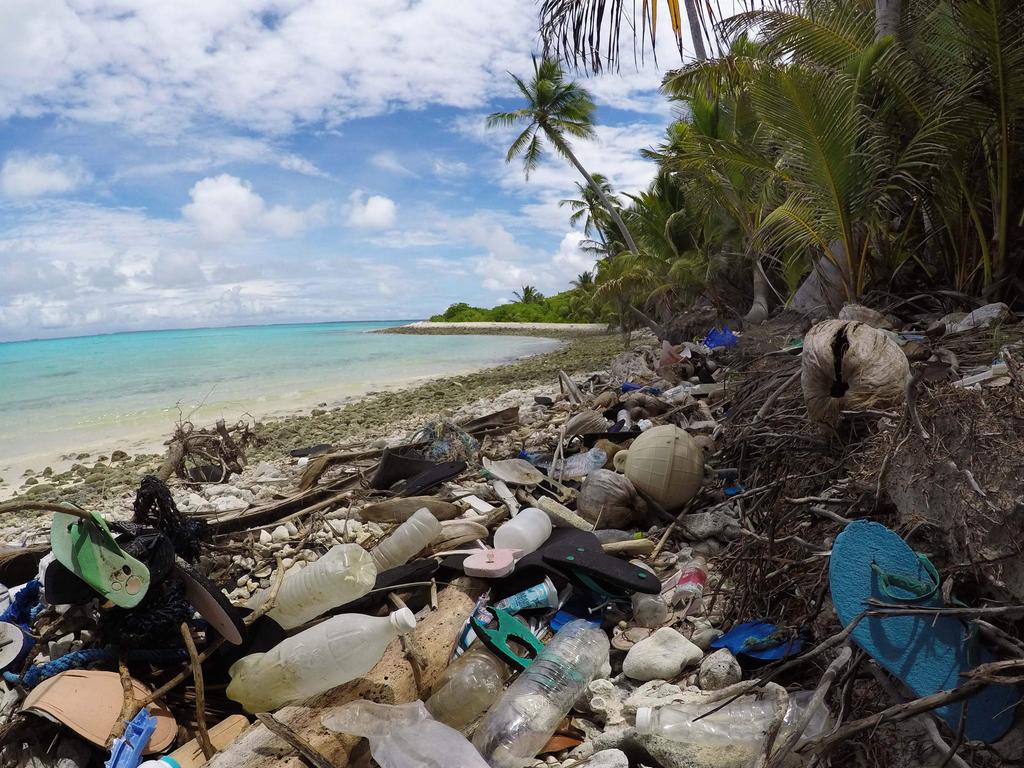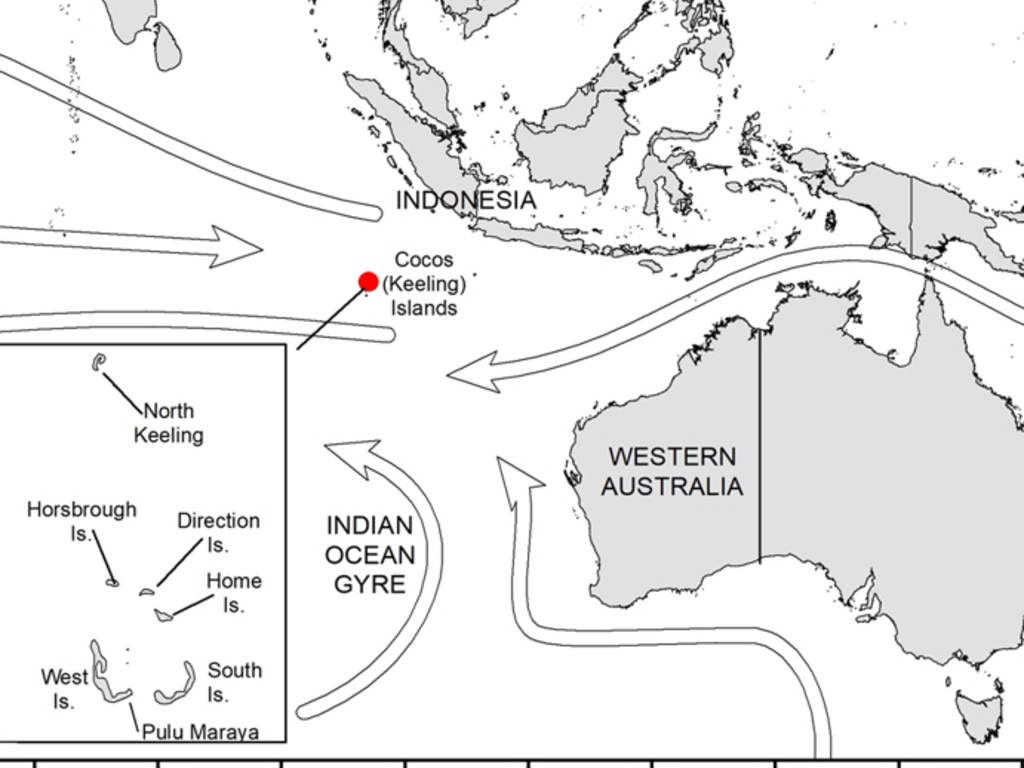238 tonnes of plastic wash up on ‘last ocean paradise’
These islands market themselves as Australia’s “last unspoilt island paradise”. But a new study shows that paradise has been destroyed.

A remote tropical island paradise that is in Australian territory in the Indian Ocean has had 414 million pieces of rubbish wash up on its shores, including plastic straws, cigarette lighters, almost one million shoes and 373,000 toothbrushes.
The Cocos (Keeling) islands, which are southwest of Indonesia and almost 3000km northwest of Perth, comprise 27 islands described on their website as “Australia’s last unspoilt paradise”.
But a study, published in the journal Nature, has found the Australian external territory littered with 238 tonnes of plastic and other waste.
Jennifer Lavers from the University of Tasmania’s Institute for Marine and Antarctic Studies led the study of North Keeling and six of the 26 islands that make up the horseshoe chain of the group’s southern atoll.
The islands surveyed made up nearly 90 per cent of the total land mass, and 93 per cent of the rubbish was buried in the top 10cm of sand.
Unlike in other islands’ rubbish surveys where the debris had broken down, the plastic on the Cocos islands was still intact.
Pictures of the rubbish show thongs and sandals, and the itemised debris includes large amounts of food packaging, caps and lids, cotton buds and plastic bags.
The Cocos Islands had a lower density of plastic than Henderson Island, in the Pitcairn group in the southern Pacific, which Ms Lavers had surveyed.


But the massed volume was higher than Henderson Island’s 38 million pieces, which weighed 17 tonnes.
A recent global estimate suggested there were 5.25 trillion pieces of plastic ocean waste spread across the world’s oceans. That’s more pieces than there are stars in the Milky Way.
“Global plastic production has increased exponentially over the last 60 years,” Ms Lavers’ study says.
“Nearly half of all plastic manufactured during this time was produced in the last 13 years, with 40 per cent of items entering the waste stream in the same year they were produced.”

Local beach clean-ups could not keep pace with “an estimated 2000 oceanic islands worldwide, and thousands of new plastic items washing up on remote beaches every day”.
The amount of waste in shoes and toothbrushes washed up would have taken the local island group population of 500 people about 4000 years to produce.
But getting rid of the plastic pollution that finds its way ashore is not easy.
“They can’t clean it up by themselves, but they’ve struggled to find landfill sites, and getting it off the island proves impossible,” Dr Lavers told the ABC.
Exporting any recyclable materials to the Australian mainland is restricted due to complex biosecurity legislation.
“The community has asked for help. I hope we can find a solution to the problem they’re currently dealing with,” Dr Lavers said.




